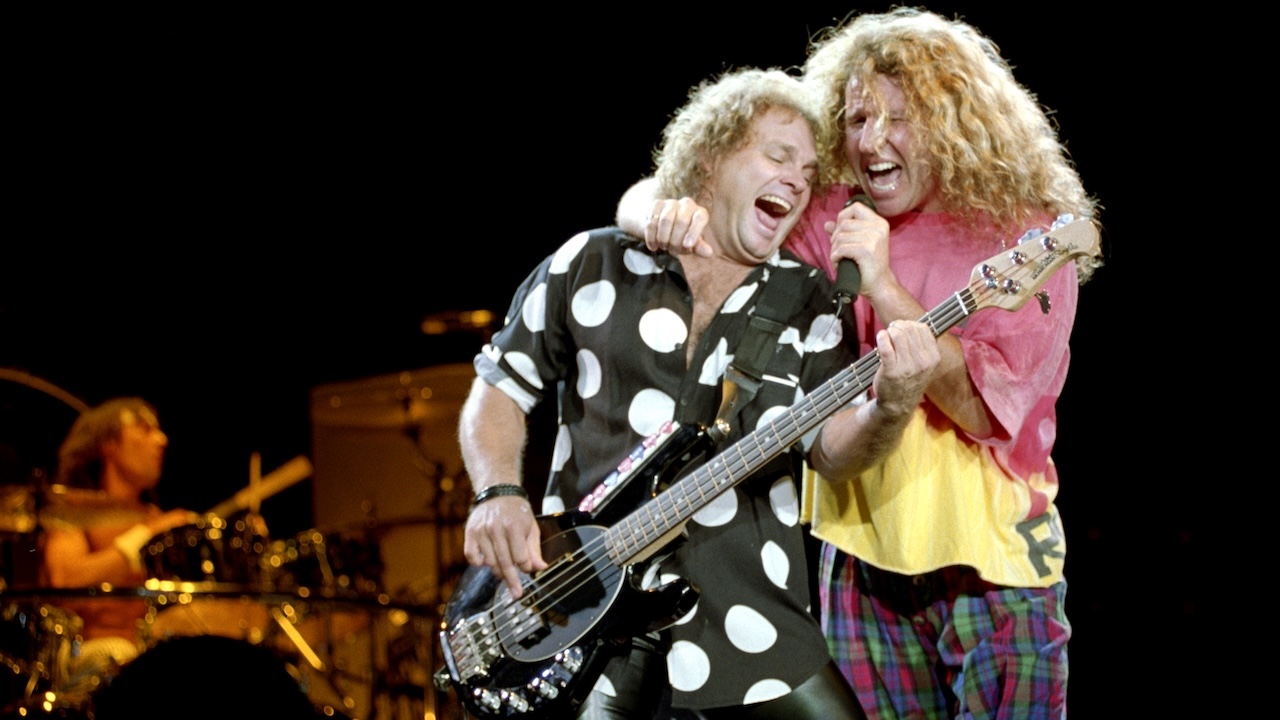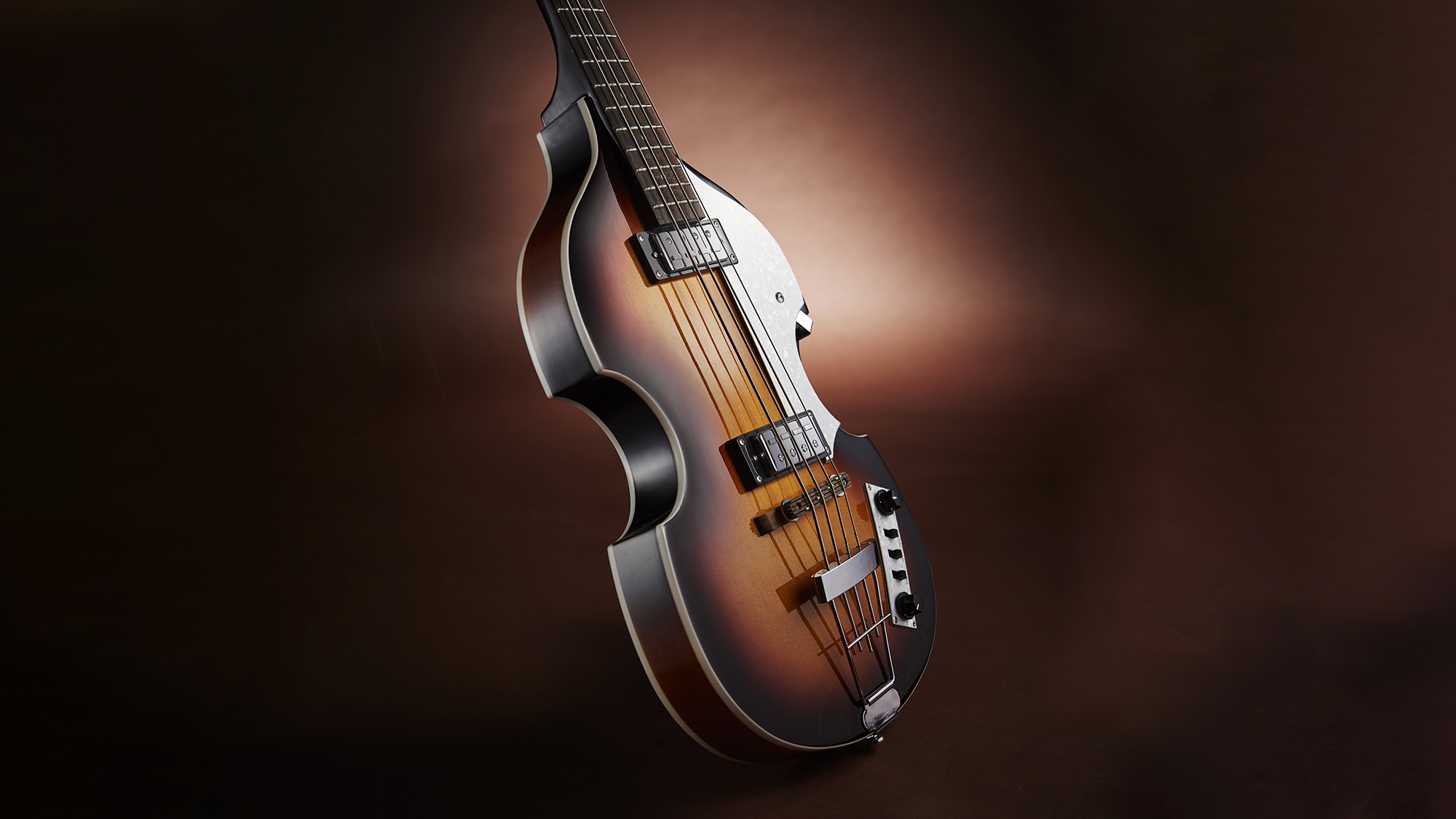“Let me see you lay down a groove like Poundcake. That’s harder than getting up there and soloing”: The lead single from Van Halen’s 1991 album with Sammy Hagar combines a thunderous bassline with a revved-up power drill
Michael Anthony’s 16th-note bass grooves remained as much a part of the “Van Hagar” sound as Eddie Van Halen’s guitar pyrotechnics

Van Halen’s third album with frontman Sammy Hager, For Unlawful Carnal Knowledge, was released in summer 1991, just as the Seattle grunge revolution was poised to explode.
Notable for its absence of keyboards and ballads (apart from the piano-dominated Right Now), it was an immediate success, debuting at #1 on the Billboard charts and spawning several hit singles as well as a hugely successful world tour. It also demonstrated that Van Halen remained a vital force amid changing musical times.
As he had since the band's 1978 debut, Michael Anthony provided the basslines and the high vocal harmonies that remained as much a part of the band's signature sound as Eddie Van Halen's guitar pyrotechnics.
“I loved making that album,” Anthony told Bass Player back in 2018. “Working with producer Andy Johns was great – he wanted a big bass guitar sound, and I think it really came out. The band was firing on all cylinders. It was a great time.”

The lead single, Poundcake, features a thunderous 16th-note bassline that provides much of the track's heaviness and power, while also supporting the other musicians and serving the song.
“I hold things together so Ed can play anything he wants. I don't get to flash as much as I'd like to, but I'd say to any bass players who are critical, ‘Let me see you lay down a groove like Poundcake.’ To me, that's harder than getting up there and soloing.”
While a few earlier Van Halen songs such as Mean Streets featured 16th-note basslines, they generally followed the guitar riff. On Poundcake, however, the bass works in contrast to Van Halen's syncopated riff, driving the track relentlessly from down among the low frequencies.
All the latest guitar news, interviews, lessons, reviews, deals and more, direct to your inbox!
“Back then, we always tracked everything live as a band – we would play, and Sammy would sing or scat any ideas that he had. A lot of times when Eddie would show us a riff, Alex would just bust into a beat and we would jam.”
In the case of Poundcake, he notes that “the openness of the chords and the beat pretty much lent itself to a 16th-note pulsating groove underneath.”
The track begins with Eddie Van Halen revving up a power drill before Alex Van Halen's four-bar drum groove. Anthony enters with a booming swoop down the E string, and then he immediately starts laying down 16th-notes under the sparse guitar riff. Chromatic, melodic, and bluesy minor-pentatonic licks provide contrasting tension-and-release to the steady flow of root notes.
For the first verse, and Sammy Hagar's vocal entrance at 00:53, the constant rumble of the bass is especially striking under the false harmonics provided by Eddie Van Halen.
The pre-chorus at 01:58 is the only part of the song where Anthony’s bassline doubles the guitar riff for an extended period. He returns to previous form for the second chorus, and a brief bridge at 02:34 .
The guitar solo begins at 02:52, marked by a key shift up a whole-step to F#, and a funk-inflected bass groove by Anthony for the first eight measures (before returning to 16ths for the final 12 bars). The return of the pre-chorus at 03:38 is also a whole-step higher, to correspond with the guitar-solo key.

The final chorus finds Anthony shifting up an octave for the first seven measures (and an octave higher yet for the eighth). To play the part requires excellent time, considerable stamina, and an ability to groove without sounding mechanical.
“I suggest you get out the metronome, set the tempo, and just start locking into it. You do not want to sound like a machine playing the line; you have to make it pulsate, rather than playing it straight. That's when you get it grooving!”
Anthony used Rotosound roundwounds, and he believes he played a Music Man StingRay on the song, although he isn't certain. The amp was an SWR.
“I don't remember which model it was, but it was a bi-amp system, with one 4x10 speaker cabinet and one 1x15 cabinet.”
Chris Jisi was Contributing Editor, Senior Contributing Editor, and Editor In Chief on Bass Player 1989-2018. He is the author of Brave New Bass, a compilation of interviews with bass players like Marcus Miller, Flea, Will Lee, Tony Levin, Jeff Berlin, Les Claypool and more, and The Fretless Bass, with insight from over 25 masters including Tony Levin, Marcus Miller, Gary Willis, Richard Bona, Jimmy Haslip, and Percy Jones.
You must confirm your public display name before commenting
Please logout and then login again, you will then be prompted to enter your display name.
![Van Halen - Poundcake (Official Music Video) [HD] - YouTube](https://img.youtube.com/vi/1uF5xMhfp1c/maxresdefault.jpg)
